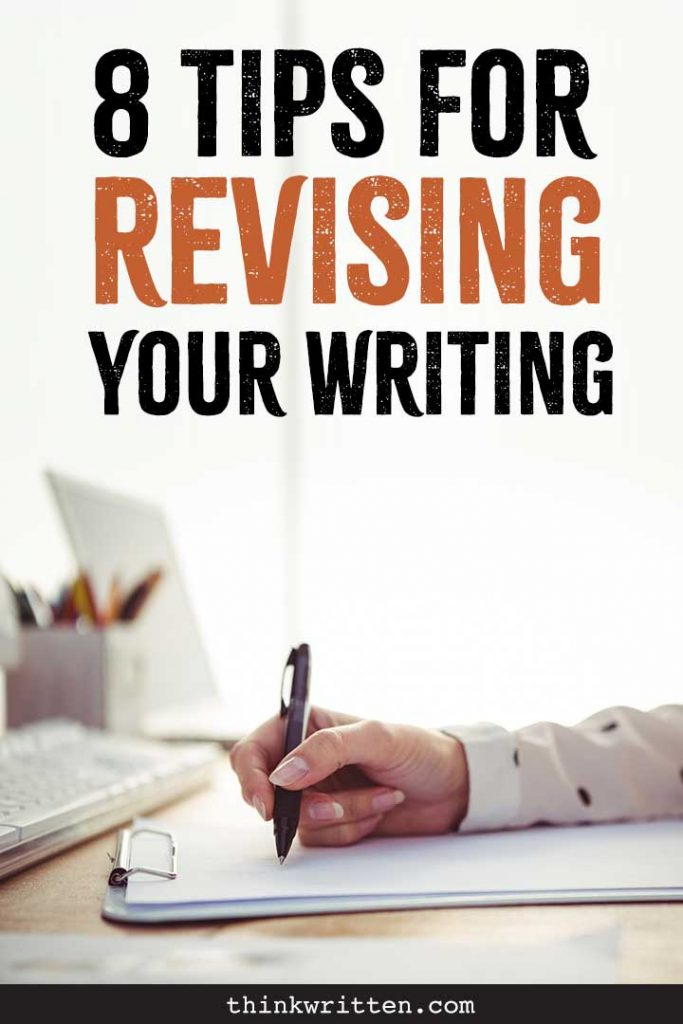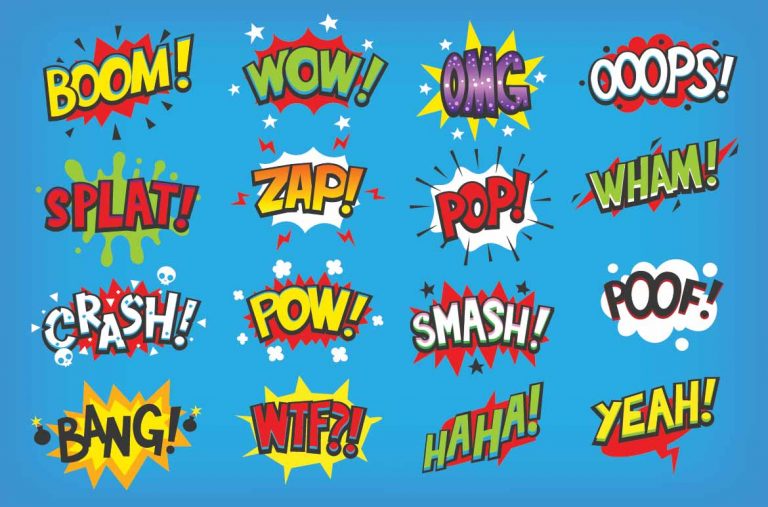We may receive a commission when you make a purchase from one of our links for products and services we recommend. As an Amazon Associate we earn from qualifying purchases. Thank you for support!
Revising your writing doesn’t have to be a long painful process. Follow these tips to make your revision process a fun and easy one.

One of my favorite Billy Joel songs is “Get It Right the First Time.” It’s a great song, but an impossible goal, even for someone with as much talent as him.
As a writer, you are going to need to understand why they call it a “first” draft – there is an understanding that there will be more than one.
Revising your writing is as important as the actual act of writing. It’s where you polish your piece to make it ready for the rest of the world, even if that only includes one other person.
Here are some tips for how to revise your writing:

1. Wait Until the First Draft is Done
That’s right. Wait. Finish writing your first draft before you dive headlong into the revision process. There are a few reasons for this. First, every moment you spend revising an incomplete manuscript is time that could be better spent working on the actual manuscript.
If you deviate from the process of writing, it can be hard to get back into the flow of creation. Don’t deviate from the plan. Stay on course and wait until you’ve arrived at your destination to start editing.
The second reason echoes the first. If you distract yourself from the goal of finishing your manuscript, there is the danger of falling down the rabbit hole of self-doubt. You could make endless tweaks to a single sentence, and that may call into question the whole paragraph. Maybe the page. Maybe the whole section or chapter. Maybe you should scrap the whole thing and just start over?
There is a creature in your head that whispers vicious things in your own voice and makes you second guess your ability or your ideas. You want to starve that voice of attention, so get the work of a first draft done first. Then you can say you did it! And that voice will have nothing else to say.
2. The Rule of Two

After you have finished your first draft (and maybe let it rest for a bit – like a fine steak), you need to read through it at least twice.
First, the technical run – spelling and grammar. Fix all those your/you’re/yore and there/their/they’re flops and make sure you haven’t left any incomplete sentences, run-ons, or adverbs (we’ll get to these in a minute). Ensure voice consistency (active, please), and maintain perspective (first person, second person, third person omniscient/limited).
Second, make substantive corrections. Edit out inconsistencies and anything that messes with the overall flow of the work.
See Related Article: What’s the Difference Between Editing vs. Revising?
As you make your runs through the text, keep these other pointers in mind:
3. Take Notes

While reading through the first time (and, for longer works, as you are writing) make notes SEPARATE from the actual text.
I keep a Rhodia Squared dot pad handy for just about everything – sketching out ideas in visual form, writing notes about characters and places (especially how to SPELL their names), and sometimes the alternate ideas that voice I mentioned before comes up with (we may not always agree, but sometimes it has a good idea or two).
Take note as you run your first technical revisions about anything you want to revisit during the second part of your revision process. That will make it easier to come back to, and, let’s be fair, the biggest lie we tell ourselves is “I don’t need to write that down. I’ll remember it later.”
4. Don’t Trust Technology Too Much
Spelling and Grammar checks have come a long way since the first time I installed Microsoft Word back in the mid 90’s. Unfortunately, not far enough. As I write this, Word has highlighted at least a half-dozen grammatical non-errors.
As you build your skills as a writer, put a few tools in your toolbox to help you better understand how language works. English is a fickle mistress, and I will evangelize the Elements of Style until my dying breath. It’s a quick read with loads of great information to help you be a better writer and communicator in general. Get a copy (it’s cheap) and keep it handy. Refer to it for any questions on grammar you might have.
5. Adverbs are the Devil
Lazy writers use adverbs. Period. If you are doing your job well enough, describing the scene and the characters, the reader will understand how an action is performed well enough without any of those -ly words hanging about. Think about these examples below – what sounds better?
“I’ll get you for this!” he said angrily.
He shook his fist, knuckles white with rage, and shouted “I’ll get you for this!”
Same idea, but I think we can agree the second version transmits it with better clarity. Do your best to avoid adverbs. You won’t be perfect – none of us are – but do your best.
6. Kill Your Darlings
This is the hardest part of revising your writing. Sure, it’s easy to know when your writing is bad, and little is more satisfying than culling the weak from your word-herd. But what about those times when you read your own writing and fall in love…and then suddenly realize that this spectacular bit of prose doesn’t actually belong with the rest of the work. Maybe you could make it fit, or tweak somewhere else to force it to work.
It’s a difficult decision, but in the end the best and simplest way to deal with this scenario is to swipe the red pen and take it out. Aside from the mechanical process of fixing your spelling mistakes and revising for voice, your primary concern during the revision process is to remove everything that isn’t the story.
That means sometimes you have to kill your darlings – those bits of work that really sing, but brought the wrong sheet music to choir practice. If you feel terrible about it, cut and paste into a separate document to look at it later.
7. Know When to Stop Revising
Remember when we talked about that voice? It can show up during the regular revision process, too. When you get to the end of your second run through the text, you are going to be tempted to go through again. And again. And again.
If your immediate feeling about concluding the revision process is contentment, then stop. Tell yourself that it is good enough. Fix yourself a coffee or a cocktail or whatever you do to celebrate and enjoy the moment. Kick your feet up and relax. You have earned it, my friend!
8. Open the Door
The last and most stressful part of the whole process is to let someone else have a crack at it. This should be your Designated Reader – a person who knows you; someone you can trust to give honest feedback about your work.
It doesn’t hurt if they have an interest in your genre (and some technical know-how of the craft), but that isn’t totally necessary. If you can watch them read it, don’t. It’s as private a matter for someone to read your work as it was for you to write it.
Give them space and time, and be prepared for feedback of all kinds. If you hit a home run, then great! You’re ready for the next step. If your Designated Reader has some valuable critique, make targeted changes. Remember to know when enough is enough.
Do you have any tips to share about how to revise your first draft? Share your tips for revising your writing in the comments below!





